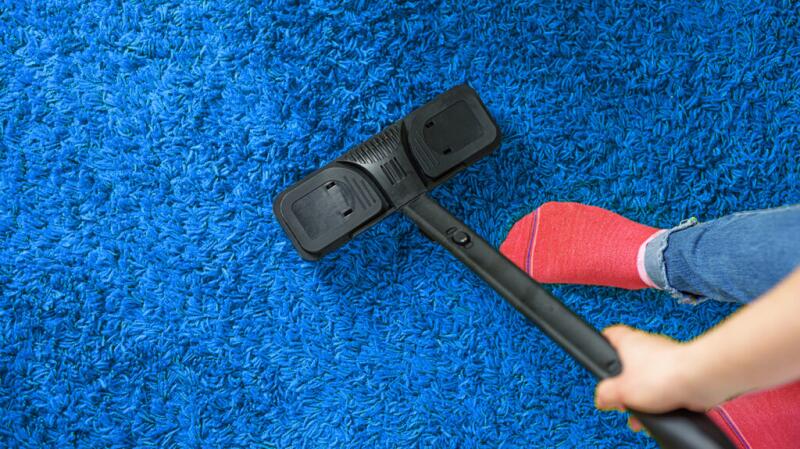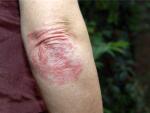You cannot completely remove mites from your environment. However, you can control them and relieve allergy symptoms.
This article will explain what mites are, how to tell if they have bitten you, and what to do if you suspect you have a mite allergy.

Mites are a small type of arachnid, with eight legs, like spiders. Mites can live on plants, animals, and insects.
Sometimes, mites can transmit diseases. Mites can also cause skin issues, such as dermatitis, and allergic reactions. However, most mites do not harm humans.
Types of mites
Some of the most common types of domestic mites include dust mites and storage mites.
Where are mites usually located?
A 2014 review states that the most common type of mite found in a human home is the dust mite. The dust mite naturally lives in dust. Another type of mite common in houses is the storage mite.
Mites can be found in:
- dust
- mattresses and pillows
- stored food
- upholstery
- stored traditional Chinese medicinal herbs
According to the American Lung Association, mites affect human health by causing flare-ups of allergies and asthma. Symptoms may be mild or severe, as shown in the following table.
| Mild symptoms | Severe symptoms |
|---|---|
| • occasional runny nose • watery eyes • sneezing | • persistent sneezing • cough • congestion • feeling of pressure in the face • asthma attack |
If you have asthma, being in contact with mites can cause more severe and more frequent asthma attacks.
There are ways to treat allergic reactions and conditions that mites can cause.
The most common treatments are over-the-counter and prescription medications, such as:
- antihistamines
- nasal corticosteroids
- leukotriene receptor antagonists
- cromolyn sodium
- decongestants
These usually help relieve your symptoms. However, many people with a dust mite allergy do not experience complete relief from these medications.
To help you control or reduce the intensity of your allergic reactions, talk with your doctor about long-term treatments such as:
- subcutaneous immunotherapy, allergy shots
- sublingual immunotherapy, under-the-tongue tablets
Learn what to do for chigger bites here.
If you persistently notice the following marks on your skin, you may have mites in your home:
- discoloration on your skin
- small, hard, or inflamed bumps
- irritation and itching near the site of the possible bite
- swollen or blistering skin
Learn about scabies, which a type of mite causes, here.
You may have mites in your home and an allergy to them if you experience persistent:
- itchy skin, nose, mouth, or throat
- watery, red eyes
- runny or stuffy nose
- sneezing or cough
- difficulty breathing
- chest tightness or pain
Learn more about dust mite allergies here.
You can find mites in almost every type of habitat, so you likely are in contact with mites daily.
Mites are parasites, and they are attracted to:
- rats and their nesting areas
- birds, wild or domestic
- plants
- water
- dust
- mold
- various types of grain
It is impossible to eliminate dust mites completely. However, you can reduce their number by taking
- using a dehumidifier to keep humidity below 50%
- covering pillows and mattresses with dust-proof covers
- washing bedding and blankets at least once per week in hot water, minimum 130°F (55°C)
- replacing wool or feather bedding with synthetic types
- replacing carpeting with a hard floor
- removing fabric curtains and rugs
- using a damp mop to remove dust
- using HEPA filters in your vacuum cleaner
Natural remedies
In addition to humidity control and regular housecleaning, essential oils may help reduce the number of dust mites in your house. Recent studies find that certain oils and substances demonstrate strong acaricide, or mite-killing, activity.
These oils and substances include:
- pineapple balm
- patchouli essential oil
- Melissa officinalis essential oil
- horseradish essential oil
- basil essential oil
- manuka essential oil
- camphor and camphene
Completely proofing your environment against mites is
Frequently cleaning bedding, carpets, curtains, and any item that can collect dust is most important. Controlling moisture is also important in reducing the spread of mites in your house.
You can also use pesticides and essential oils to kill dust mites.
Cleaning
It is very important to regularly wash bedding, blankets, rugs, upholstery, and curtains in hot water. Hot water kills the mites nested in the fabrics.
Another fundamental part of housecleaning is using a certified vacuum cleaner with HEPA filters. These filters retain a substantial proportion of dust particles.
Using damp wipes instead of dry ones to dust surfaces may also help keep mites away.
Moisture control
Controlling moisture is an important factor in lowering dust mite allergens. Try to improve ventilation in your house, especially in the bedrooms, to reduce humidity.
If necessary, use a dehumidifier to keep humidity between 30%–50%.
Exclusion
Exclusion methods can help you control the spread of certain types of mites, such as clover mites. Make sure entry points to your house are perfectly sealed to prevent mites from coming into the building. Entry points include:
- doors
- windows
- vents
- utility line entrances
- foundations
Keep rats, birds, and mice away from your property. They can spread mites that live in their nests.
When landscaping, keep plants away from the perimeter of your house.
Pesticides
Certain pesticides can be effective, depending on the type of mites you are trying to get rid of. Using products containing benzyl benzoate and possibly abrasive formulations may help you get rid of dust mites.
You can also use insect repellents containing between 7% and 30% “DEET” when you are facing grass or clover mites. In severe cases, you can try using pesticides labeled as “miticides” or “acaricides.”
Mites are the cause of many allergic reactions that can be more severe in individuals with asthma. Mite allergies cause symptoms such as a runny nose, watery eyes, and sneezing. Severe reactions include congestion, persistent sneezing, cough, or asthma attack.
Dust mites are the most common type of mite. You can find them in animals’ nests, carpets, rugs, curtains, and fabrics in general.
To reduce the spread of mites and relieve allergy symptoms, remove curtains, carpets, and rugs where possible; use a vacuum with a HEPA filter; wash fabrics and blankets with hot water; and dust the surfaces in your house.




















